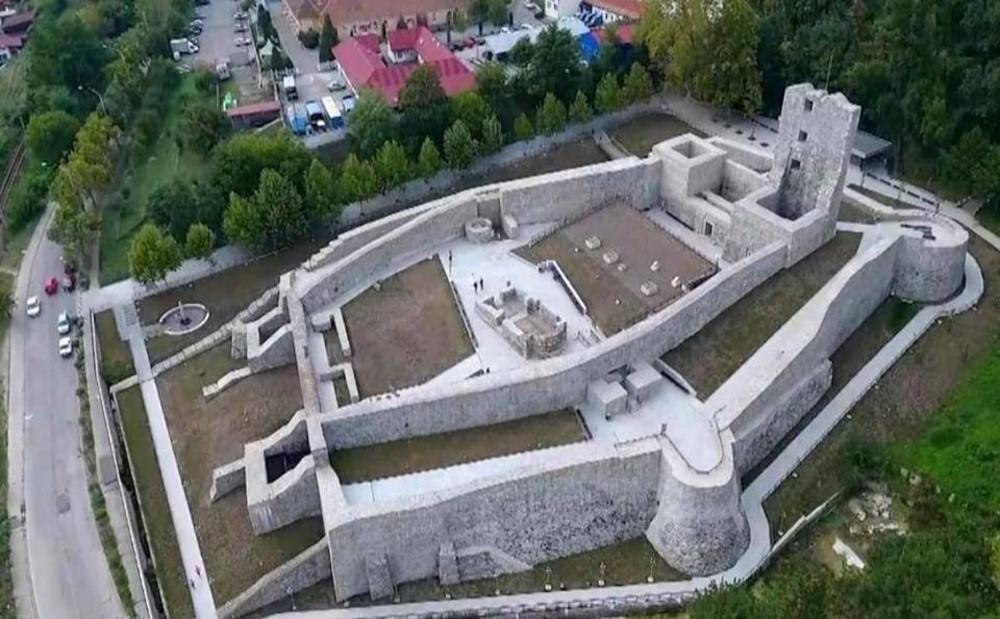In 1247 the Hungarian kingdom brought into the country the Knights Ioanites, giving them their residence in Severin, where they will build the medieval fortress of Severin (the Zeurini Castrum mentioned in the Diploma of knights Ioanites in 1247), powerful fortress, in the precinct of which was built a Gothic church, probably the seat of the Catholic diocese of Severin, which was here until 1502. The knights will withdraw in 1259, the fortress remaining in the beating of the cannons of the Turks, Bulgarians and Tatars who wanted to cross the Danube, respectively of the Hungarians who attacked Oltenia. At the end of the thirteenth century King Stephen of Hungary fought five wars with the Bulgarian Tsardom to defend the Fortress of Severin.
The ruins that are seen today do not come from just one building. There were two enclosures, one inner and one outer, the latter fenced by a ditch. As a result of the excavations, a series of square towers flanking the inner courtyard were revealed; two are placed on the side flanking the inner enclosure, two are placed on the south side at the extreme ends, and two others located on the inner side of the defensive wall. From the tower that is located in the north-eastern part, a wall is still preserved, which reaches the height of three floors, it has 11 m, a length of 9 m and a width of 2.5 m.

